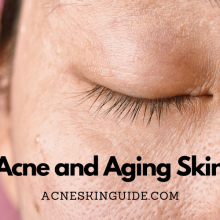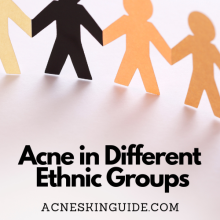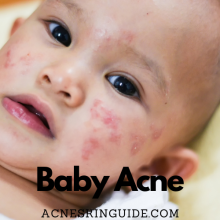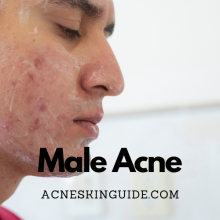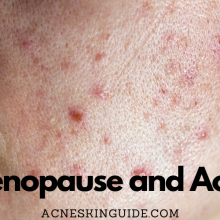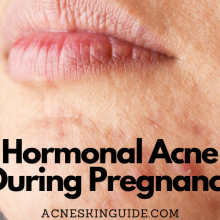Acne in Your 30s, 40s, and Beyond – Dealing with Adult Breakouts | AcneSkinGuide
Summary of Acne in Your 30s, 40s, and Beyond
Adult acne is more common than many think, affecting up to 25% of women and men even into their 30s, 40s, and beyond. Contrary to the myth that acne is just a teenage issue, dermatologists point to culprits like fluctuating hormones, chronic stress, genetics, diet, pore-clogging products, and environmental exposures as driving forces behind persistent breakouts in adulthood. While hormonal factors often cause stubborn chin/jawline acne in women, adults can experience various types from blackheads to cystic lesions.
Dermatologists treat adult acne with topicals, prescriptions, professional procedures and by addressing triggers through diet, stress relief, and a good skincare regimen. However, treatments require diligence, can be costly, and don’t cure psychological effects like low self-confidence. For severe, scarring cases that don’t improve with initial efforts, seeing a dermatologist for more aggressive intervention becomes crucial to getting lasting clear skin.
Our Top 5 Recommended Acne Treatment Products

Defying the Myth: Adult Acne is More Common Than You Think
When you envision someone dealing with acne, odds are a self-conscious teenager comes to mind. But for a surprisingly large number of adults, pimples and breakouts remain an all-too-real struggle well beyond the high school years.
“There’s definitely a misconception out there that acne is just a passing phase you magically grow out of after adolescence,” says Dr. Melissa Kanchanapoomi Levin, a board-certified dermatologist and clinical instructor at NYU Langone Health. “The reality is, many men and women continue to battle acne throughout their 30s, 40s, and even into their 50s.”
In fact, studies estimate that between 15-25% of women and up to 25% of men experience acne as adults. Whether sporadic flare-ups or a chronic daily issue, adult acne can take both a physical and emotional toll, leading to permanent scarring, hyperpigmentation, low self-confidence, and decreased quality of life.
The Driving Forces Behind Adult Breakouts
So what exactly causes acne to persist – or even develop for the first time – during adulthood? While each case is unique, dermatologists point to a number of common catalysts.
Fluctuating Hormones
Just as wild hormonal shifts during puberty initially triggered most people’s first acne breakouts as teens, hormonal fluctuations throughout adulthood can reignite the pimple cycle. “Any major hormonal transition – menstrual cycles, pregnancy, perimenopause, menopause – causes androgenic hormones like testosterone to spike,” explains Dr. Levin. “These higher androgen levels then stimulate increased oil production from sebaceous glands, leading to clogged pores and breakouts.”
Chronic Stress
When you’re constantly stressed, your body pumps out higher levels of cortisol and other hormones that can overstimulate oil glands and provoke inflammation – the perfect storm for new pimple development.
Genetic Predisposition
If acne runs in your family tree, you’re statistically more likely to experience persistent breakouts yourself. Research shows that roughly 50% of all acne cases have some genetic component influencing oil production, inflammation response, and more.
Dietary Factors
While this is still an active area of study, multiple studies suggest that dairy products, foods high on the glycemic index (white bread, chips, etc), and diets heavy in processed items may drive increased acne severity by spiking insulin and inflammation levels.
Pore-Clogging Skincare/Makeup
Using heavy, comedogenic (pore-clogging) cosmetics, sunscreens, creams, or hair products can lead to excess oil buildup and trapped debris in your pores, sparking new pimples in the process.
Environmental Irritants
For some acne-prone adults, exposure to air pollution, cigarette smoke, and other airborne particulates can be enough to trigger angry breakouts along the cheeks, jawline, and anywhere that regularly comes into contact with these irritants.
Types of Adult Acne and Effective Treatments
While hormonal flare-ups around the chin and jawline are quite common in adult female acne, the presentation can vary widely. Some may only get occasional raised whiteheads or blackheads, while others struggle with deep, painful cystic acne or large clusters of inflamed papules and pustules.
To treat the many different forms adult acne can take, dermatologists rely on a combination approach tailored to each patient:
Over-the-Counter Topicals
For milder cases, potent over-the-counter topical treatments like salicylic acid, benzoyl peroxide, and retinoids derived from vitamin A can help unclog pores, kill acne-causing bacteria, and reduce inflammation when used regularly.
Prescription Medications
To take things up a notch, oral and topical prescription retinoids like tretinoin, tazarotene, or isotretinoin (Accutane) are often prescribed for their stronger pore-clearing and anti-inflammatory capabilities. Other prescriptions like oral contraceptives or spironolactone can specifically target hormonally-driven acne by regulating androgen levels.
Professional Procedures
For severe cystic breakouts, in-office procedures like prescription-strength chemical peels and specialty lasers can achieve deeper pore cleansing and deliver anti-inflammatory effects from the inside out. In some cases, dermatologists may also recommend acne surgery to directly drain and extract particularly stubborn, painful cystic pimples.
Establishing an Acne-Fighting Skincare Routine
Regardless of which treatments are used, maintaining a gentle, non-irritating daily skincare routine is absolutely essential to keeping adult acne under control.
“I have all my acne patients use an oil-free, salicylic acid face wash in the morning followed by an alcohol-free vitamin C serum, lightweight moisturizer, and mineral-based sunscreen,” advises Dr. Levin. “At night, they use a prescription retinoid cream or gel, followed by a hydrating hyaluronic acid serum and oil-free nighttime moisturizer.”
Other key skincare habits Dr. Levin emphasizes: Never sleeping in makeup, exfoliating 2-3 times per week with a soft brush or chemical exfoliant, and minimizing use of heavy, pore-clogging cosmetics whenever possible.
Managing Contributing Lifestyle Factors
While medical-grade treatments and a diligent skincare regimen form the foundation of an effective adult acne strategy, addressing potential diet and lifestyle triggers can also be hugely beneficial.
“I had one patient in her late 30s who finally got decades of recurring hormonal chin acne under control after cutting out dairy and taking steps to reduce her stress levels,” notes Dr. Levin. “Look at potential dietary culprits, find ways to manage stress through exercise or meditation, and be vigilant about thoroughly removing makeup each night.”
Other Tips:
- Wear oil-free mineral sunscreens to avoid clogging pores
- Minimize exposure to air pollution, cigarette smoke, and environmental irritants
- Switch to non-comedogenic hair products that won’t transfer to face
- Routinely wash pillowcases, towels, phone surfaces, etc.
Dealing with Acne’s Aftermath
For those who’ve battled persistent acne over many years, one of the cruelest legacies can be the scarring and discoloration it leaves behind – even after getting active breakouts under control.
While acne marks may eventually fade on their own over time, most dermatologists recommend targeting them more aggressively to fully restore an even, smooth complexion. Common treatments include:
Chemical peels – Using alpha hydroxy acids like glycolic acid to slough off dead, discolored surface layers of skin and reveal fresher, more uniform tone beneath.
Microneedling – Making microscopic “injuries” across scarred areas to trigger the skin’s healing response and boost collagen production for a smoother texture.
Lasers – Using fractionated CO2 or erbium lasers to precisely resurface and diminish the depth of acne scars and indentations for clearer skin.
Topical brighteners – Applying concentrated vitamin C, kojic acid, licorice root, or other brightening serums regularly to speed the fading of residual hyperpigmentation and marks.
When to Seek Professional Help
Dealing with the occasional pimple in adulthood is one thing, but more severe, persistent adult acne often requires the care and oversight of a board-certified dermatologist.
“If over-the-counter products and lifestyle changes aren’t having any impact after 8-12 weeks of diligent use, or if you’re starting to develop acne scars or cystic breakouts, it’s time to get professional help,” says Dr. Levin. “We can get you on prescription medications and explore in-office treatment options to clear your acne faster and more effectively before it leads to permanent damage or scarring.”
A dermatologist’s expertise is also crucial if you experience excessive hair growth, irregular periods, or other symptoms that could indicate an underlying hormonal imbalance like polycystic ovary syndrome (PCOS) driving the acne.
Potential Downsides of Adult Acne Treatments:
- Oral prescription medications and in-office procedures can be quite costly, especially without health insurance coverage
- Treatments may require consistent, long-term use and maintenance to control acne
- Side effects like dryness, peeling, redness, sun sensitivity are possible with many acne medications
- Lifestyle adjustments around diet, makeup, etc. require diligence and commitment
- Emotional impacts like embarrassment, lowered self-confidence can still occur even when treating ac
FAQs and Answers
Can birth control help treat adult acne?
Yes, birth control pills can be an effective treatment option for adult acne, especially for women. Here’s how birth control can help with acne:
- Regulates hormones: Birth control pills contain synthetic versions of the hormones estrogen and progestin. These hormones help regulate the levels of androgens (male hormones like testosterone) in a woman’s body. Excess androgen production can lead to increased oil/sebum production and clogged pores, contributing to acne breakouts.
- Suppresses ovulation: By suppressing ovulation, birth control pills prevent the cyclical hormonal fluctuations that can trigger acne flares before a woman’s menstrual period.
- Reduces inflammation: Some birth control formulations have anti-inflammatory properties that can directly reduce acne inflammation and lesions.
- Helps with hormonal acne: Birth control is particularly useful for treating more stubborn adult acne related to hormonal imbalances or conditions like polycystic ovary syndrome (PCOS).
However, it’s important to note that birth control may not work for everyone, and it can take 2-3 months of consistent use to see improvements in acne. Dermatologists often combine birth control with other topical treatments for best results. The specific formulation also matters, with birth control containing drospirenone being most effective for acne.
What role does diet play in adult acne?
Diet can potentially play a significant role in contributing to or aggravating adult acne. While more research is still needed, several dietary factors have been linked to acne development:
- Dairy products: Multiple studies have associated dairy consumption, especially skim milk and whey protein, with increased acne severity. This may be due to the hormones naturally present in dairy or the ability of dairy to spike insulin levels.
- High glycemic index foods: Foods that rapidly raise blood sugar levels like white bread, chips, sweets, etc. can trigger a spike in insulin and insulin-like growth factor-1 (IGF-1). Higher insulin/IGF-1 levels promote increased oil production and inflammation.
- High fat/processed foods: A diet high in greasy, fried, or heavily processed foods has been associated with more acne breakouts, potentially due to the inflammatory and hormonal effects of these foods.
- Low antioxidant intake: Not consuming enough nutrients with antioxidant and anti-inflammatory properties from fresh produce may increase vulnerability to acne inflammatory responses.
- Food sensitivities: In some cases, allergies or intolerances to specific foods like gluten or dairy can manifest as increased acne when those trigger foods are consumed.
The connection between diet and acne likely stems from how various foods influence hormone levels, oil production, inflammation, and gut health – all factors that play a role in acne development.
Making dietary adjustments by limiting dairy, high glycemic foods, and processed items while increasing antioxidant-rich plant foods may provide noticeable improvements for many adult acne sufferers when combined with other treatments.
How does stress actually cause acne breakouts?
Stress can contribute to acne breakouts through a few different biological mechanisms:
- Hormonal impacts
Under stressful conditions, the body increases production of certain hormones like cortisol, glucocorticoids, and androgens. These hormones stimulate the sebaceous glands in the skin to produce more sebum (oil). Excess sebum can clog pores and create an environment ripe for acne-causing bacteria to multiply. - Inflammation
Stress triggers inflammatory responses in the body by raising levels of inflammatory molecules like cytokines, inflammatory proteins, and neuropeptides. This widespread inflammation can worsen acne by increasing redness, swelling, and irritation of existing acne lesions. - Weakened skin barrier
Prolonged stress weakens the skin’s protective outer barrier, allowing more acne-causing bacteria, pollutants, and irritants to penetrate the skin and clog pores. It also impairs the skin’s ability to retain moisture properly. - Altered gut health
Psychological stress can negatively impact the gut microbiome and disrupt the gut-brain-skin connection. An imbalance of gut bacteria may trigger inflammatory responses that exacerbate inflammatory skin conditions like acne. - Increased oil production
In addition to hormonal influences, stress also causes more oil production via a nerve-based pathway. Stress activates nerve endings that stimulate the oil glands to produce more sebum.
By reducing stress through exercise, meditation, yoga, counseling or other management techniques, many adults are able to get flare-ups under better control as the body’s physiological responses return to normal.
Are there any natural/alternative remedies for adult acne?
Yes, there are several natural and alternative remedies that some adults try for managing their acne:
- Tea tree oil
This essential oil derived from the Australian teatree plant has antimicrobial and anti-inflammatory properties. Using a 5% tea tree oil gel may help reduce acne lesions, though it can cause dryness or irritation for some. - Green tea
Green tea is rich in antioxidants that may help fight bacterial growth and reduce inflammation associated with acne. Consuming green tea or using a green tea-based topical can provide benefits. - Aloe vera
The gel from the aloe vera plant contains compounds with antibacterial, anti-inflammatory, and healing effects that may improve acne when applied topically. - Honey
Raw honey has antimicrobial and calming properties. Using a honey face mask can help kill acne-causing bacteria while moisturizing the skin. - Zinc
This mineral plays a role in wound healing and has anti-inflammatory effects. Increasing zinc intake through diet or supplements may aid some cases of adult acne. - Probiotics
Some evidence suggests probiotics (via supplements or fermented foods) can help reduce acne by improving gut health and reducing systemic inflammation. - Herbal remedies
Herbs like spearmint tea, nigella sativa, and guggulu are used in alternative medicine to treat acne by targeting hormonal factors.
While natural doesn’t always mean better or safer, some adults prefer exploring these types of alternative therapies alongside conventional treatments. But it’s still advisable to consult a dermatologist, as natural remedies alone are often not enough for stubborn adult acne cases.
How can acne be prevented in your 30s/40s if you didn’t have it as a teen?
Developing acne for the first time as an adult in your 30s or 40s, despite not having issues as a teenager, can be frustrating. However, there are still steps you can take to try to prevent and manage these late-onset breakouts:
- Identify triggers
Pay close attention to when breakouts occur and possible triggers like hormonal changes, new medications, dietary factors, stress levels, or skin care products. Keeping a journal can help pinpoint your personal triggers. - Manage hormonal changes
For women, hormonal fluctuations from menstrual cycles, pregnancy, perimenopause, etc. are common culprits. Using oil-free products, staying hydrated, and considering birth control pills may help regulate hormones. - Stick to a good skincare routine
Use a gentle, non-comedogenic (non-pore-clogging) cleanser, moisturizer, and sunscreen daily. Exfoliate regularly but avoid over-scrubbing. Remove makeup fully before bed. - Try over-the-counter treatments
Start using OTC acne products with ingredients like benzoyl peroxide, salicylic acid, retinoids, or sulfur to help prevent breakouts before they start. - Reduce stress
Make lifestyle changes to lower stress levels through exercise, meditation, yoga, or other relaxing activities to prevent stress-induced hormonal acne flare-ups. - Evaluate your diet
Limit potential trigger foods like dairy, sugary/processed foods, and eat more anti-inflammatory items.Some find cutting specific foods helps. - Don’t pick or pop
As tempting as it is, picking and popping pimples can worsen acne and lead to scarring.
If homecare efforts aren’t working after several months, seek help from a dermatologist who can provide prescription treatments tailored to adult acne. Early, consistent management is key to preventing acne from progressing or causing long-term skin damage.

